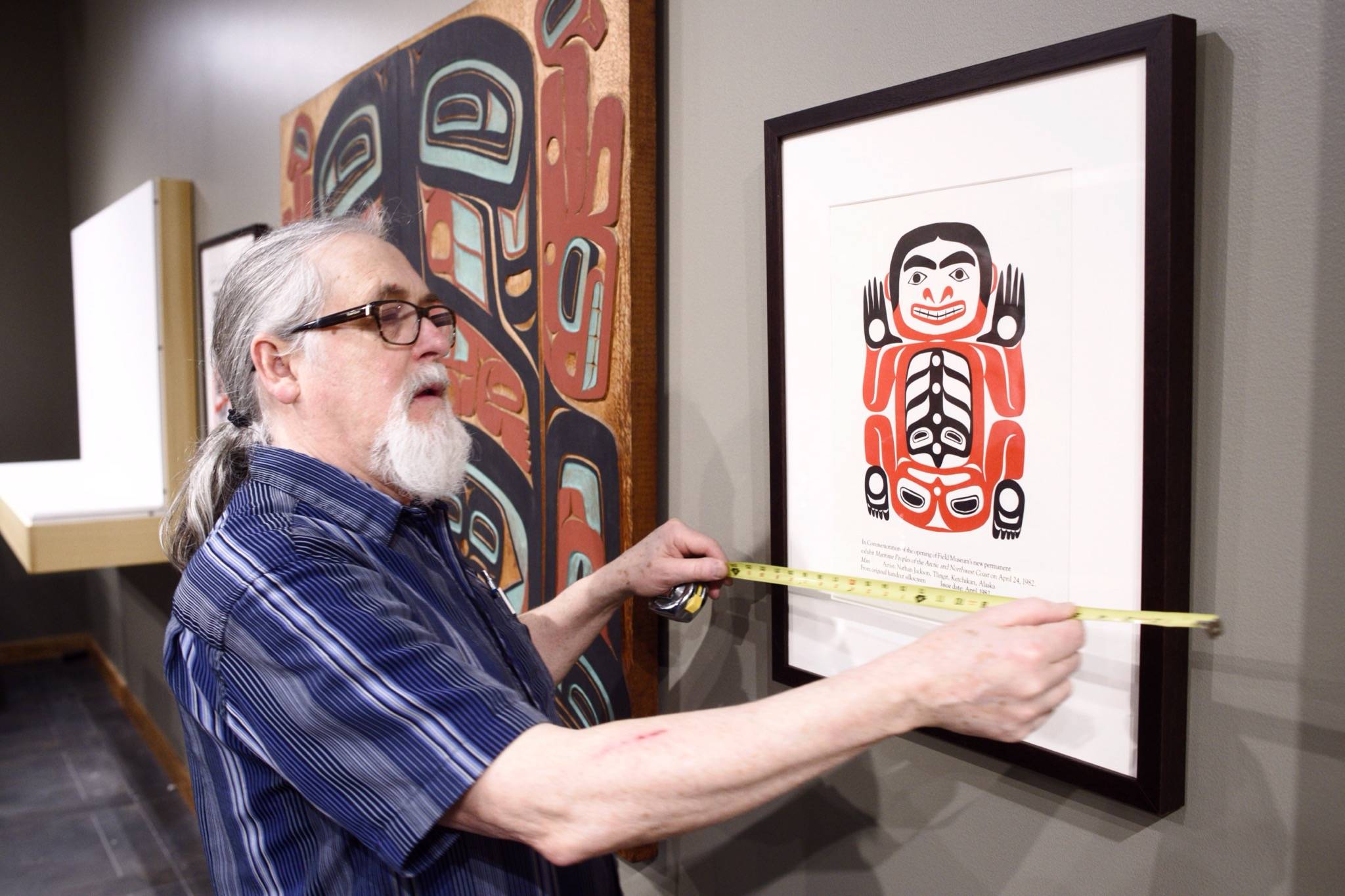There’s always been a lot of Nathan Jackson artwork in Juneau, and there’s about to be a lot more.
Pieces by the prolific and acclaimed Tlingit artist can be found year-round at Sealaska Heritage Institute’s Walter Soboleff Building, University of Alaska Southeast’s Egan Library, Juneau-Douglas High School: Yadaa.at Kalé among other places, but an upcoming exhibit will present an unprecedented and expansive collection of his work.
“I feel like this is a great honor,” Jackson said when reached by phone in Ketchikan. “I kind of feel like I’ve been doing my very best to do artwork and explore, but I didn’t do this all alone. There were people that had brought me out to the forefront, and I appreciate those individuals very much for what they’ve done.”
[Mending wounds through culture]
Steve Brown, who is Native arts curator for Sealaska Heritage Institute, a longtime acquaintance of and occasional collaborator with Jackson, is helping to curate an upcoming retrospective of Jackson’s work that will open April 5 at the Walter Soboleff Building. It will include about 60 pieces borrowed from private collections, museums and other sources to create a decades-spanning exhibit to highlight Jackson’s long and productive career.
“One of the outstanding things that I think makes Nathan’s work singular is he really from the beginning has looked at the old things for his inspiration,” Brown said. “Where a lot of the other Southeast Alaska Tlingit artists of that generation were working in a style or styles that had developed in the 20th century. His work is really exemplary for historic Tlingit style.”
Over a long career, Jackson has worked and continues to work in a number of media.
“We have masks, painted objects, hats, a basket, bent-corner boxes, bent-corner carved bowls,” Brown said. “We have some early works of his from his days before and after going to the Institute of the American Indian Arts in Santa Fe. It’s a fairly comprehensive spread of his career.”
Brown said care was taken in creating a Tlingit-language display that serves as a written, traditional introduction to Jackson that will be part of the exhibit.
“The only description that fits it is epic,” Brown said. “It is an epic presentation of Nathan, his life and his work in the Tlingit language with the translation.”
[Guys and Dolls now showing at Perseverance Theatre]
Jackson, now 80, said he started focusing on his art and carving in particular in his late 20s after serving in the Army and being hospitalized after contracting pneumonia that was suspected of being tuberculosis.
Afterward, he recalls fighting to make a living as a fisherman, working at a cannery and whatever other work he could find. However, he was aware of his artistic inclinations and after seeing a few people who appeared to be making good livings as artists, Jackson decided it could be in a viable career path.
One day, while walking along the beach in Metlakatla, Jackson, who is from Haines, observed red cedar had washed up on the shore, which he said was also an important moment in his career.
“I thought, ‘I’m going to stay here. There’s more wood here than I could ever get in Haines,’” Jackson said.
After attending the 1964 World’s Fair, Jackson said he decided to attend the Institute of the American Indian Arts, which further rounded out his artistic repertoire.
Brown said seeing all the pieces at once makes Jackson’s artistic growth over the decades observable.
“It’s hard to describe, but I would say there seems to be a point where he appeared to be really comfortable with sculpture, with his own style, so that you don’t see any sign of the work being labored or g fussed over, it looks like it must’ve just appeared like that,” Brown said.
[Healing history and undoing the silence]
Brown said he’s enjoyed compiling the collection, which will remain on display at the Walter Soboleff Building through Oct. 15.
“It’s been a lot of fun, I’ve known Nathan for 35 years — maybe more than that — maybe 40, maybe more than 40,” Brown said, evidently surprised by the accrued time. “A lot of the objects I was familiar with from when he made them. It’s been a little hectic catching up with everyone who has these works and transport them here.”
Plus, a lot of Jackson’s works have included totem poles and large screens that would be extremely difficult to transport and impossible to display with limited space. Instead, the exhibit will include photos of the works and information about where they are located.
Jackson said he would not consider any particular effort from the past 50-odd years to be his favorite piece because of the pace of his work.
Even now, Jackson said he and Brown are working together on a display for the Alaska State Museum. Brown is carving house posts, while Jackson is making a screen to appear with them.
“When I’m being commissioned to do something, I just go ahead and do it,” he said. “I can’t consider anything a favorite because there’s going to be more.”
• Contact arts and culture reporter Ben Hohenstatt at (907)523-2243 or bhohenstatt@juneauempire.com. Follow him on Twitter at @BenHohenstatt.

